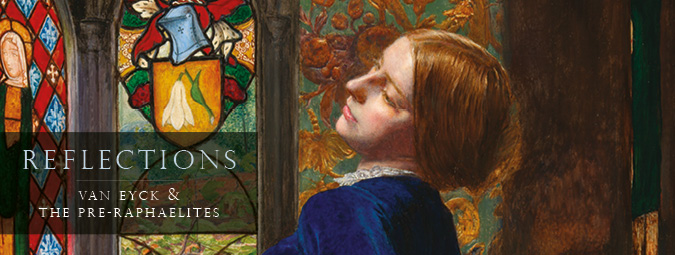The Pre-Raphaelite Brotherhood
The Pre-Raphaelite Brotherhood was formed in 1848 under the leadership of the painters Dante Gabriel Rossetti (1828–1882), Sir John Everett Millais (1829–1896), and William Holman Hunt (1827–1910). These young artists had met as students at the Royal Academy Schools (then housed in the National Gallery). Disenchanted with their teaching, and seeking a purer, more authentic form of expression, they looked to medieval art, naming their movement the Pre-Raphaelite Brotherhood. 'The Arnolfini Portrait' being the only Early Netherlandish painting in the national collection at the time, became a key formative influence on these artists.
The picture informed the Pre-Raphaelites’ belief in first-hand observation, their use of ordinary objects for symbolic purposes, their meticulous technique, and bright colours. Above all, the convex mirror in van Eyck’s painting introduced them to new ways of representing real and illusory space. In dubbing the Pre-Raphaelites ‘the pre-van Eycks’, critics of the day acknowledged the strong impact of van Eyck’s double portrait on their art and vision.
While the Pre-Raphaelites professed admiration for pre-industrial medieval society, they also had a distinctly modern agenda. They abandoned pompous subjects in favour of profound and emotionally resonant themes. Their first works were religious, but they also depicted themes from literature (Shakespeare and Tennyson were favourites) and contemporary life.

